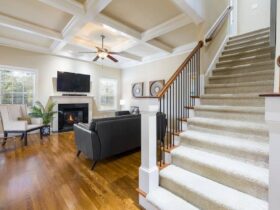High Home creation, also known as high-altitude architecture, is the practice of designing and building structures that are elevated at a considerable height above the ground. This concept has gained significant popularity in recent years as people look for new and innovative ways to live and enjoy their surroundings. In this article, we will explore the benefits and challenges of high home creation, the different types of structures that can be built, and some of the most famous examples of high-altitude architecture.
Benefits of High Home Creation:
Unique Perspective: One of the main benefits of high-altitude architecture is the unique perspective it offers. When you live at an elevated height, you have a completely different view of your surroundings, and you can see things that you would never be able to see from ground level.
Privacy: Living high up provides an added layer of privacy, as you are further removed from street-level noise and passersby.
Environmental Benefits: Elevated structures can reduce their environmental impact by reducing the footprint on the ground, conserving land resources, and reducing the risk of flooding and erosion.
Luxury Living: High-altitude architecture has become a symbol of luxury and exclusivity, with many high-end homes and resorts boasting impressive views and amenities.
Challenges of High Home Creation:
Structural Safety: Building at high altitudes presents unique challenges in terms of structural safety. High winds and the forces of gravity must be taken into account when designing and building elevated structures.
Access: Building at high altitudes can be challenging, as access to the site and materials must be carefully planned to ensure safety and efficiency.
Weather Conditions: Elevated structures are more exposed to weather conditions such as lightning, wind, and temperature fluctuations. Designing the structure with the appropriate materials and construction methods to withstand these conditions is essential.
Types of High Home Structures:
Treehouses: Treehouses are a classic example of high-altitude architecture, providing a unique and natural living experience.
Skyscrapers: Skyscrapers are the ultimate in high-altitude architecture, reaching incredible heights with their steel frames and concrete cores.
Suspended Structures: Suspended structures, such as bridges and walkways, are another form of high-altitude architecture that is both functional and aesthetically pleasing.
Famous Examples of High Home Creation:
Burj Khalifa: The Burj Khalifa in Dubai is the tallest building in the world, reaching a height of 828 meters (2,716 feet). This iconic skyscraper is a symbol of modern architecture and innovation.
The Treehotel: The Treehotel in Sweden offers a unique experience, with each room designed as a suspended treehouse.
The Hanging Gardens of Babylon: One of the ancient wonders of the world, the Hanging Gardens of Babylon were an incredible feat of engineering, with plants and trees growing on terraces supported by stone columns.
In conclusion, high home creation offers a unique perspective and benefits such as privacy, environmental benefits, and luxury living. However, it also presents challenges such as structural safety, access, and weather conditions. Despite these challenges, high-altitude architecture is an exciting and innovative field that offers endless possibilities for unique and stunning structures.













